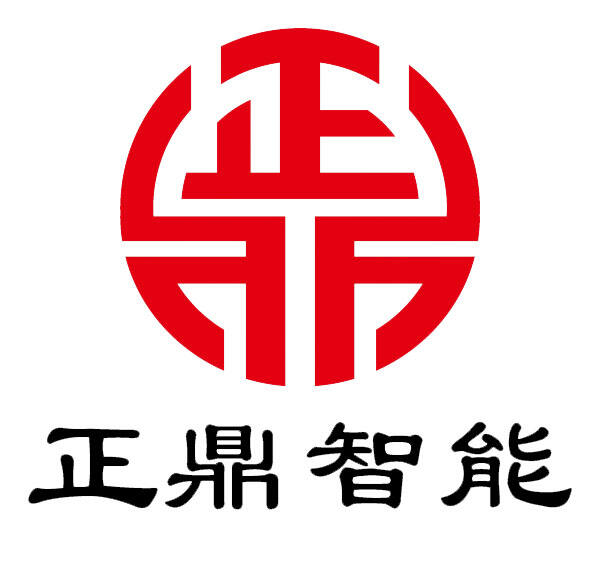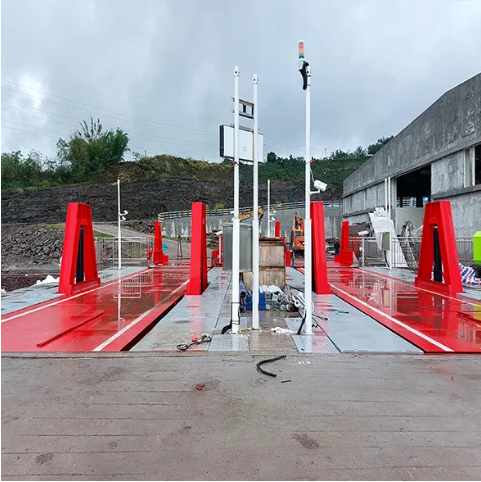The Evolution from Traditional to Intelligent Unloading Systems
Manual Labor vs. Automated Precision in Ports
Old school unloading methods depended mostly on people doing all the work, which created tons of problems and wasted time. When things had to be moved manually, mistakes happened all the time. People working these jobs got really tired from lifting heavy stuff day after day, and whole operations would grind to a halt whenever there weren't enough workers available or someone made a mistake. Things changed when automated systems came into play, bringing about major improvements in both accuracy and how fast things could get done. Smart unloading tech now allows for much more precise movements and quicker processing times, cutting down on waiting periods and reliance on human workers. Take Qingdao Port as an example - their completely automated container terminal has shown some impressive results according to China's transport ministry stats. They saw around 6% better efficiency overall and managed to handle 15% more containers than before they went fully automated.
Looking at real world examples makes it clear what happens when ports adopt automation technology. Take Qingdao and Yantai for instance these Chinese ports saw their efficiency jump significantly after implementing automated systems. The numbers tell the story pretty well too around 20 percent better performance than old fashioned methods in terms of both unloading cargo and overall operations. What does this mean practically? Less time wasted waiting for containers to be moved means more money rolling in while cutting down on the need for human workers doing backbreaking dock work. Smart unloading tech isn't just some fancy upgrade anymore its becoming essential equipment for any port wanting to stay competitive in today's shipping landscape.
Breaking Dependency on Human-Intensive Processes
Most unloading operations still depend heavily on manual labor, and this comes with real problems. We're seeing fewer workers available for these jobs plus all sorts of mistakes happening because people get tired or distracted. The whole system just isn't very efficient when so much depends on human hands doing the same thing over and over again. That's where smart unloading tech starts to make sense. Ports that invest in automation see dramatic improvements. When machines handle those boring, backbreaking tasks day after day, they don't miss a beat like humans sometimes do. Precision stays high while output goes up, and best of all, there's no need to worry about finding enough workers for every shift anymore.
As we move ahead, cutting back on human labor might bring major changes to how workforces operate across industries. Automation does cut down mistakes and boost efficiency, but this means current employees need training to handle these new tech systems properly. The shift from old school manual operations to smart automated setups matters a lot for places like shipping ports. These facilities can stay ahead of the game by adopting better technology, but they also have to make sure workers aren't left behind during this transition. Smooth changes benefit everyone in the long run when handled right.
Core Technologies Revolutionizing Unloading Operations
AI-driven Container Positioning Algorithms
Artificial intelligence plays a key role in making container placement more accurate, which cuts down on time spent finding containers and makes unloading much more efficient. Ports that implement these smart systems can automate how containers get aligned and stacked, so every box ends up exactly where it needs to be for quicker access later. These kinds of improvements in managing cargo really do make operations run smoother and shorten those long waiting periods at docks. Take Rotterdam as an example they rolled out some pretty sophisticated AI tech recently and saw their overall efficiency jump somewhere around 30%. What this shows is that AI has real power to change how things work at ports, cutting through those frustrating delays and reducing the need for workers to manually adjust everything all the time.
IoT-enabled Real-time Load Monitoring
Bringing IoT tech into port operations means containers can now be tracked in real time, completely changing the game for managing cargo movement. These smart devices come packed with sensors and internet connections that show exactly what's happening with each load. The constant stream of visual data cuts down on waiting around and makes decisions much more accurate. When problems pop up at the docks, managers get alerts instantly so they can fix things before small issues become big headaches. Some research out there suggests that ports using this kind of smart technology see their efficiency jump anywhere from 20% to 25%. That's not just numbers on paper either it actually transforms how busy ports handle day to day challenges.
Autonomous Vehicle Integration in Mining Logistics
Self driving vehicles are making big waves in mining operations these days, transforming how materials get moved around and boosting overall output across many mines. The cost savings come from fewer workers needed on site plus better routes that cut down fuel waste. Plus there's the safety factor too since people aren't stuck behind the wheel in dangerous conditions anymore. These machines rely on high tech sensors and GPS systems to navigate through rocky terrain and dust filled air that would confuse most humans. Take the Pilbara region for instance where companies started using driverless haulage trucks back in 2018. Productivity numbers went up around 15 percent compared to traditional methods while accident reports dropped off dramatically. Mines adopting this technology are now seeing real improvements in both bottom line profits and worker safety metrics.
Operational Efficiency Breakthroughs in Global Ports
Qingdao Port's World-Record 60.9 Containers/Hour Efficiency
Qingdao Port located in Shandong Province recently broke records by moving an incredible 60.9 containers every single hour, setting a new high bar for port operations. The secret behind this feat lies in cutting edge automation tech such as massive bridge cranes and fleets of automated guided vehicles that work around the clock to move containers with remarkable speed. What makes this accomplishment so noteworthy isn't just the numbers themselves but how it changes the game for international shipping networks across the globe. Logistics professionals are already talking about how Qingdao has essentially redefined what's possible when it comes to port efficiency standards. Many within the industry believe other major ports will need to follow suit if they want to stay competitive in today's fast paced global market where time equals money and delays cost billions.
Yantai Port's 20% Bulk Cargo Improvement Through Full Automation
Yantai Port recently overhauled its bulk cargo operations by implementing full automation systems across the facility, which boosted handling efficiency by around 20%. They've installed those high speed cranes we all know about plus automated logistics solutions that slash operational costs when compared to old school manual methods. What makes Yantai stand out is how smoothly everything runs now without constant human oversight. Port managers say other facilities can learn from this example if they want better performance in their own bulk cargo operations. Looking ahead, there's definitely room for growth in port automation according to insiders. Many experts believe similar cost savings and efficiency gains are possible elsewhere too, though implementation will vary depending on each port's unique circumstances.
Safety and Environmental Advancements Through Automation
Obstacle detection systems in autonomous mining trucks
Obstacle detection systems are really important for keeping workers safe in mines, especially when dealing with those big autonomous mining trucks that roam around. The tech typically includes things like LIDAR scanners, high resolution cameras, and radar units working together to spot dangers as they happen. When these systems detect something in the path of a vehicle, they can alert operators or even take control to avoid crashes. Mines that installed this kind of equipment saw accident numbers drop quite a bit according to recent research. Beyond just saving lives, these systems help companies stay compliant with stricter environmental rules too since they cut down on spills and other forms of pollution. For many mining operations today, getting this technology onboard isn't just smart it's becoming practically essential for staying competitive while meeting all those growing safety standards.
Energy-optimized routing reducing carbon footprint
Routing systems designed to save energy bring real environmental advantages by slashing carbon emissions across industrial sectors. What makes them work? Sophisticated software calculates routes that minimize vehicle travel distance while avoiding traffic congestion points. This means fewer miles driven and less fuel burned overall. Research suggests companies adopting these smart routing methods typically cut their CO2 output by around 15-20%, which matters a lot when talking about long term sustainability goals. With governments worldwide tightening emission standards every year, businesses need to get serious about incorporating these technologies into daily operations. Beyond just meeting legal requirements, this shift helps position industries as proactive players against climate change through practical changes in how goods actually move from point A to point B.
Challenges in Modernizing Legacy Infrastructure
5G Network Requirements for Real-Time Coordination
Bringing 5G tech into logistics operations makes real time communication possible and boosts overall efficiency quite a bit. These new networks transmit data much faster than before, plus they have really low latency which matters a lot when dealing with things like automated guided vehicles or keeping track of inventory in real time. Take Caterpillar for instance, they've already started implementing 5G solutions at several sites, which has cut down response times and made coordination between different parts of their supply chain smoother. Still there are hurdles to overcome though. Upgrading old infrastructure to work with 5G costs money upfront. A lot of it actually. So companies need to look closely at what systems they currently have in place and think through how best to make the switch if they want to get all the benefits that 5G promises over time.
Reskilling Workforce for Hybrid Human-Machine Operations
With automation spreading across logistics operations, retraining employees for mixed human-machine jobs has become really important. Companies are rolling out training sessions to teach staff how to work with advanced tech while still handling regular tasks. Take warehouses for example many businesses there have managed to shift their workers into positions where people monitor and work side by side with robots and other automated equipment. This change often boosts output and makes employees happier at work. Sure, some stats show automation might replace certain jobs, but at the same time it opens doors to entirely new career paths. That means organizations need smart plans to help their teams navigate through these shifts without leaving anyone behind.
FAQ
What are the benefits of intelligent unloading systems in ports?
Intelligent unloading systems increase operational efficiency, reduce dependency on human labor, and minimize errors, leading to increased speed and accuracy in port operations.
How does IoT technology enhance unloading operations?
IoT technology provides real-time load monitoring, which reduces downtime and allows logistics managers to make precise decisions, improving overall efficiency.
What role do AI algorithms play in port unloading?
AI algorithms enhance container positioning and optimize unloading efficiency by automating alignment and stacking processes, leading to faster retrieval times.
What are the challenges faced when modernizing port infrastructure?
Challenges include the need for substantial investments in technology like 5G networks and reskilling the workforce to manage and operate automated systems effectively.

